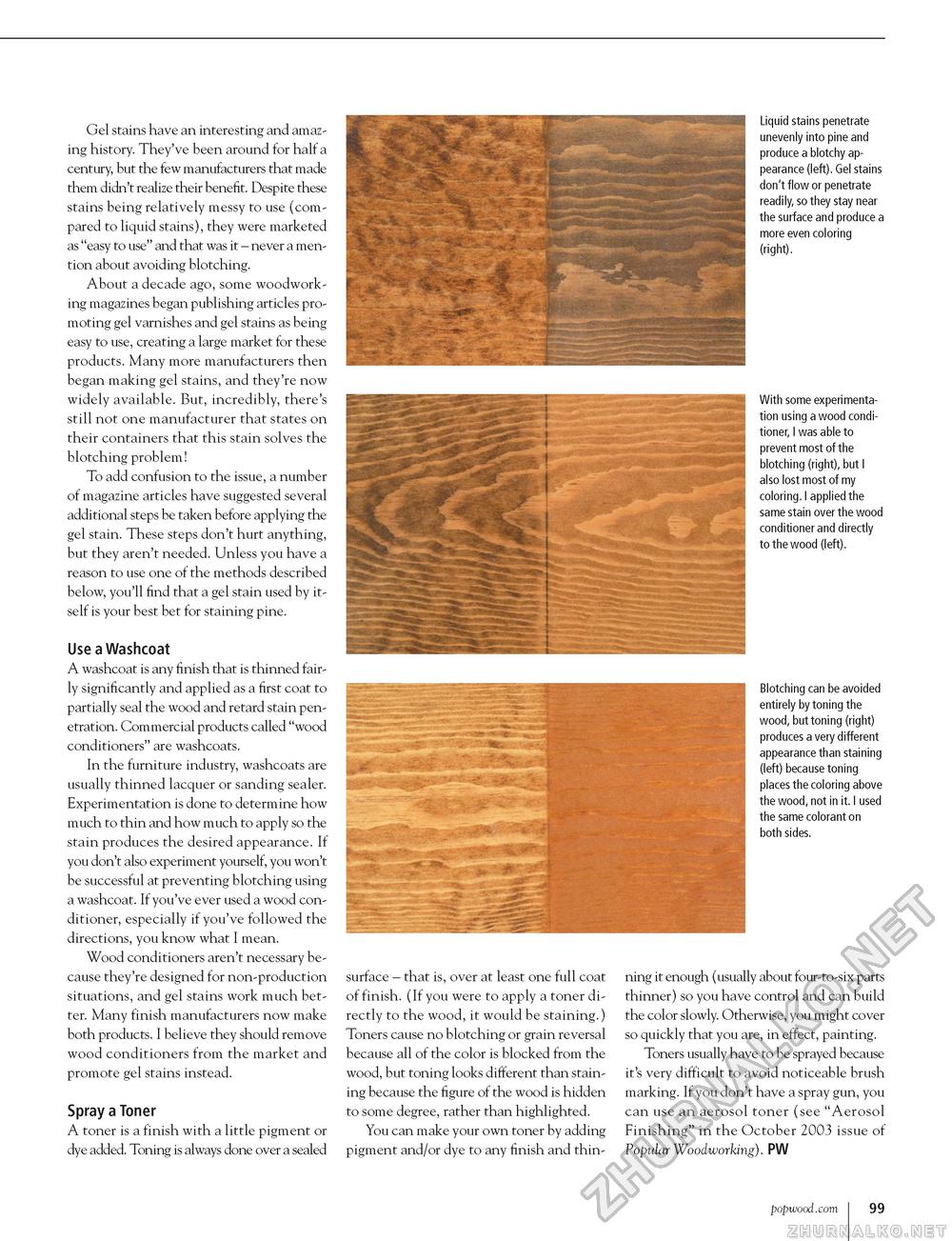Popular Woodworking 2003-11 № 137, страница 100
Gel stains have an interesting and amazing history. They've been around for half a century, but the few manufacturers that made them didn't realize their benefit. Despite these stains being relatively messy to use (compared to liquid stains), they were marketed as "easy to use" and that was it - never a mention about avoiding blotching. About a decade ago, some woodworking magazines began publishing articles promoting gel varnishes and gel stains as being easy to use, creating a large market for these products. Many more manufacturers then began making gel stains, and they're now widely available. But, incredibly, there's still not one manufacturer that states on their containers that this stain solves the blotching problem! To add confusion to the issue, a number of magazine articles have suggested several additional steps be taken before applying the gel stain. These steps don't hurt anything, but they aren't needed. Unless you have a reason to use one of the methods described below, you'll find that a gel stain used by itself is your best bet for staining pine. Use a Washcoat A washcoat is any finish that is thinned fairly significantly and applied as a first coat to partially seal the wood and retard stain penetration. Commercial products called "wood conditioners" are washcoats. In the furniture industry, washcoats are usually thinned lacquer or sanding sealer. Experimentation is done to determine how much to thin and how much to apply so the stain produces the desired appearance. If you don't also experiment yourself, you won't be successful at preventing blotching using a washcoat. If you've ever used a wood conditioner, especially if you've followed the directions, you know what I mean. Wood conditioners aren't necessary because they're designed for non-production situations, and gel stains work much better. Many finish manufacturers now make both products. I believe they should remove wood conditioners from the market and promote gel stains instead. Spray a Toner A toner is a finish with a little pigment or dye added. Toning is always done over a sealed Liquid stains penetrate unevenly into pine and produce a blotchy appearance (left). Gel stains don't flow or penetrate readily, so they stay near the surface and produce a more even coloring (right). With some experimentation using a wood conditioner, I was able to prevent most of the blotching (right), but I also lost most of my coloring. I applied the same stain over the wood conditioner and directly to the wood (left). Blotching can be avoided entirely by toning the wood, but toning (right) produces a very different appearance than staining (left) because toning places the coloring above the wood, not in it. I used the same colorant on both sides. surface - that is, over at least one full coat of finish. (If you were to apply a toner directly to the wood, it would be staining.) Toners cause no blotching or grain reversal because all of the color is blocked from the wood, but toning looks different than staining because the figure of the wood is hidden to some degree, rather than highlighted. You can make your own toner by adding pigment and/or dye to any finish and thin ning it enough (usually about four-to-six parts thinner) so you have control and can build the color slowly. Otherwise, you might cover so quickly that you are, in effect, painting. Toners usually have to be sprayed because it's very difficult to avoid noticeable brush marking. If you don't have a spray gun, you can use an aerosol toner (see "Aerosol Finishing" in the October 2003 issue of Popular Woodworking). PW popwood.com 99 |








